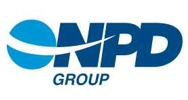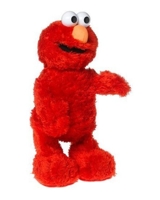| ||||||
|
“Excitement around one toy or property, like T.M.X. Elmo, can have a positive effect on the entire industry. Whatever it is that drives people into stores is likely to boost overall sales,” said Anita Frazier, industry analyst, The NPD Group. “But we’re also seeing some other signals that things may be looking up for the industry,” said Frazier. Despite a slow start to the year, with sales down 2.9 percent year-to-date through August 2006, some categories are showing sizeable gains including Youth Electronics (up 23 percent), Vehicles (up 8 percent) and Building Sets (up 3 percent). Kids Love to Play Top 5 Ways Kids Spend Their Free Time*
“Kids are spending a lot of time playing with toys. It’s a major part of their daily recreational activities and as long as kids are using toys, parents will continue to buy them,”, said Frazier. And parents appear willing to spend more than they have in the past for innovative, engaging toys. Higher priced toys, such as the Amazing Amanda, Robosapien and the Banzai Falls waterslide were among some of the top sellers last year, all with retail prices in excess of $100. In fact, the average retail price for toys has risen four percent from 2003 to 2005 in part due to these higher ticket items. More Kids = More Sales Another indicator for future growth of the toy industry stems from population trends. Over the next five years there will be nearly six percent more kids ages five and under in the U. S. than there are today and nearly four percent more kids ages six to eight. Population Projections in Millions
Source: U.S. Census Bureau "The toy industry, which at $22 billion is twice as large as the closely related video games industry, continues to do a remarkable job in responding to the changing tastes and preferences of today’s kids as evidenced by the number of new, innovative products we will see at retail this holiday. The latest indices give us reason to believe that the softness we've seen in recent years may level off or even improve in the next few years," said Frazier. "It's certainly something we are watching closely, particularly over the next few months when nearly half of all annual toy sales are generated," said Frazier. |

